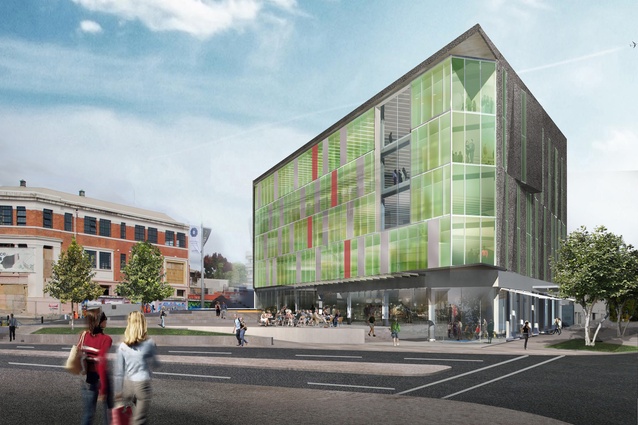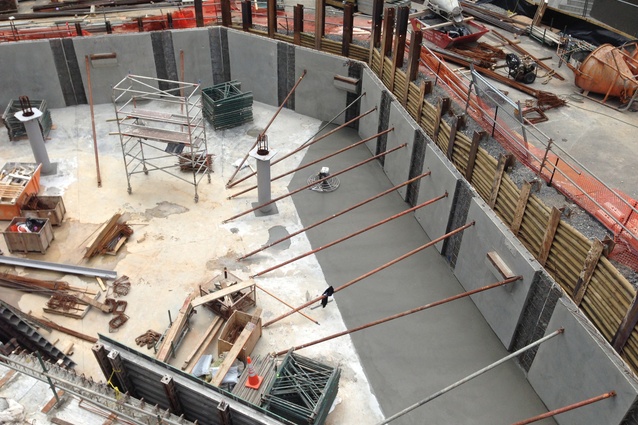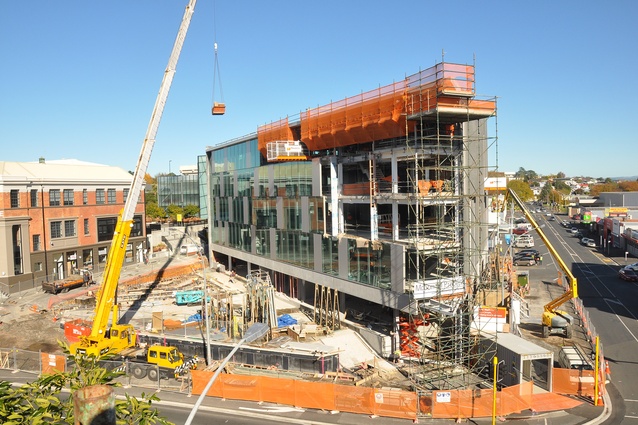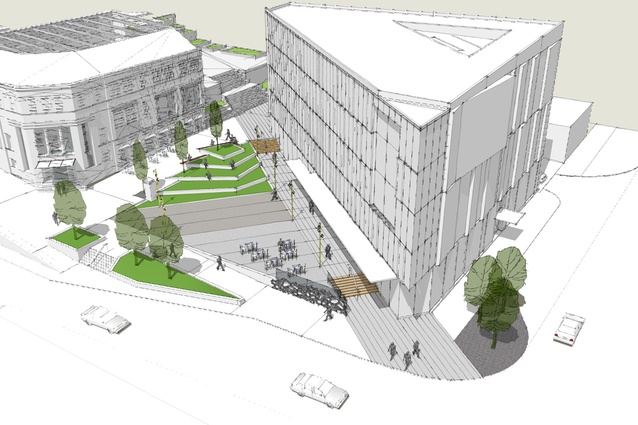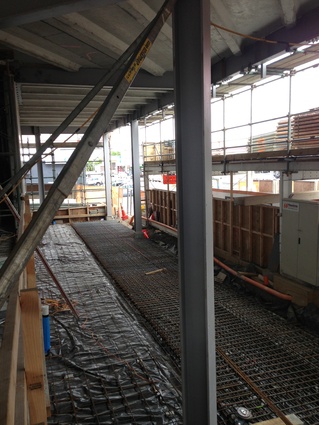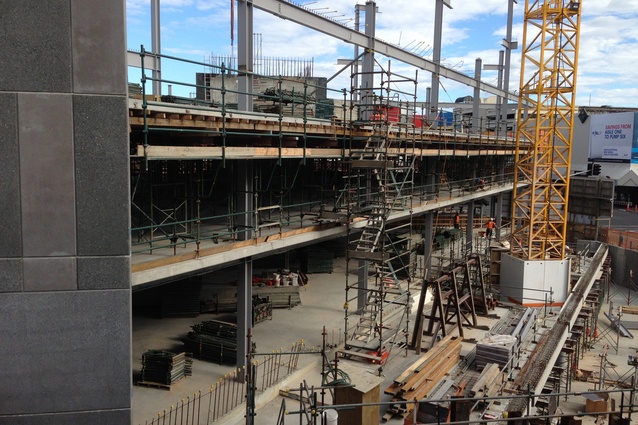Heart of Hamilton
There is no denying that parts of Hamilton’s central business district could do with a bit of a facelift. That day has come for a site that has sat vacant for the past 15 years. The patch of dirt, which was until recently used only for car parking, is on the corner of Anglesea and Ward streets, adjacent to Wintec and directly opposite the city’s central shopping area.
The strategically-designed complex and public plaza that are now nearing completion on the site will transform what was an empty field into a vital pedestrian link to the shopping district for the 20,000 students and staff at Wintec. The $20 million complex, to be called the PwC Centre, will incorporate office and retail space, along with 42 parking spaces in an underground car park, storage, and cycle parking. The rest of the site will be taken up with the carefully designed pedestrian link and public plaza. Jasmax principal and senior architect Nicholas Moyes, who worked on the design of the building, said the effort being put into the area was long overdue. “It was a community responsibility to put the heart back into the centre of Hamilton,” he said.
The site was identified early on as a revitalisation opportunity for the CBD by developers McConnell Property, as well as an opportunity to provide high quality office space for Hamilton, something the burgeoning Waikato city is short of – the vacancy rate for Grade A office space in the area is currently low, sitting at about four per cent. “The 738m2 of landscaped open space in the plaza area is a unique feature of the project in that we are creating a new open public space in Hamilton CBD,” McConnell Property senior development manager Aidan Donnelly said.
“This will provide a high quality outdoor space, allowing for art displays and café seating spilling into the paved courtyard. Not only does this link the private and public spaces but it will generate activity and create an engaging and valued asset for the city. It is also a new generation of building for Hamilton’s CBD. McConnell Property identified a gap in the current office supply for good quality, low-rise, efficient space with large floor plates.”
The building’s unusual triangular shape was driven by the desire to create a direct pedestrian link between Wintec and the shopping precinct, as well as the need for high-performing office space and an energy efficient building (the complex was awarded a four star design Green Star rating). Mr Moyes also drew inspiration from a stone found in the Hamilton area. “One of the internal faces of the stone had been polished and it had a gorgeous green fleck to it. It seemed appropriate to the design of the building in that we saw the plaza facade engaged with the city, while the other two facades were more of an enclosure.”
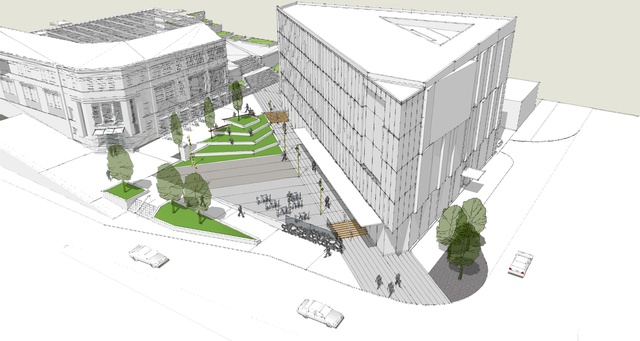
Hawkins Construction site manager Nigel Carrington said the nature of the inner-city site, on which construction started in 2012, combined with the triangular building shape and the soft, silty ground conditions -the site sits on the old Waikato River delta - proved challenging. The triangular precast concrete building is enclosed with structural joinery; the east elevation has double glazed structural curtain wall glazing, while the north and west elevations are exposed aggregate concrete panels, which are rendered charcoal.
“It is a small building with very heavy components. A 70-tonne drilling rig was brought in and we drilled down 20 metres to restabilise the site,”Mr Carrington said. The public plaza and carpark is located above deep soil mixed columns, while the building itself is sitting on large raft foundations and a series of load-bearing pads. “These foundations varied from 600mm to 800mm in depth, depending on the ground conditions,” he said.
The level of reinforcing in the triangular design and the size of exterior panels required in the building brought out buildability issues. “There was a lot of very intense reinforcing with continuous shear walls over three levels. Installation of facade panels was a particular bit of work as each facade panel had to be held in place by a crane and welded.”
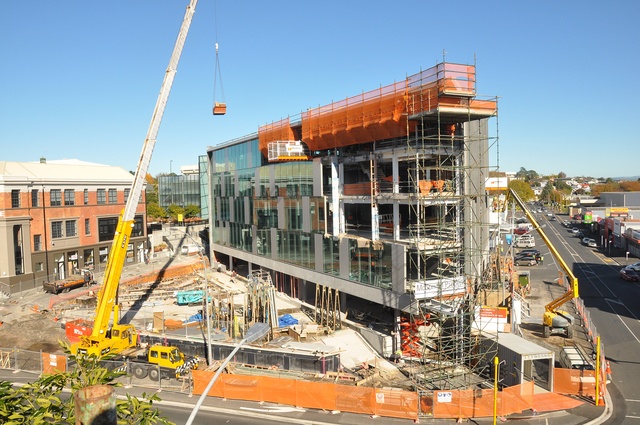
Some of the panels were overweight for the central tower crane installed early on in the build, so the roads were closed and a 160-tonne crane was brought in every third Saturday to install the overweight 20-tonne panels. In line with the architects’ vision, the east elevation is clad with structural curtain wall glazing, while the north and west elevations create an enclosure, clad with exposed concrete panels. Minimising the amount of glazing on the west elevation also limited solar heat gain and reduced the load capacity of the mechanical system.
The double T concrete flooring units were larger and heavier than usual as they had to span larger areas to minimise the need for columns and bracing. Hawkins also created the platform for the plaza, before handing ownership of the job to Hamilton City Council, who are currently delivering the hard landscaping, paving and planting.
The 738m2 plaza is a predominantly hard-paved surface, with a series of terraces fitted with artificial grass to be used as sitting platforms. Planting is restricted to the perimeter of the space, with deciduous trees chosen to allow maximum light to enter the space during winter. Drainage of the plaza area was a key technical issue in its design, Reset Urban Design director Garth Falconer said.
“A complex drainage solution was required, and the plaza was kept reasonably light in weight. The basement has several layers of drainage cells in its ceiling, plus channel drains that catch the water at certain intervals and take it away off the roof into the regular storm water,” he said. Due to open this month (August) the complex itself will accommodate up to 400 staff, while the building and adjoining plaza will inject a much-needed burst of life into central Hamilton.

